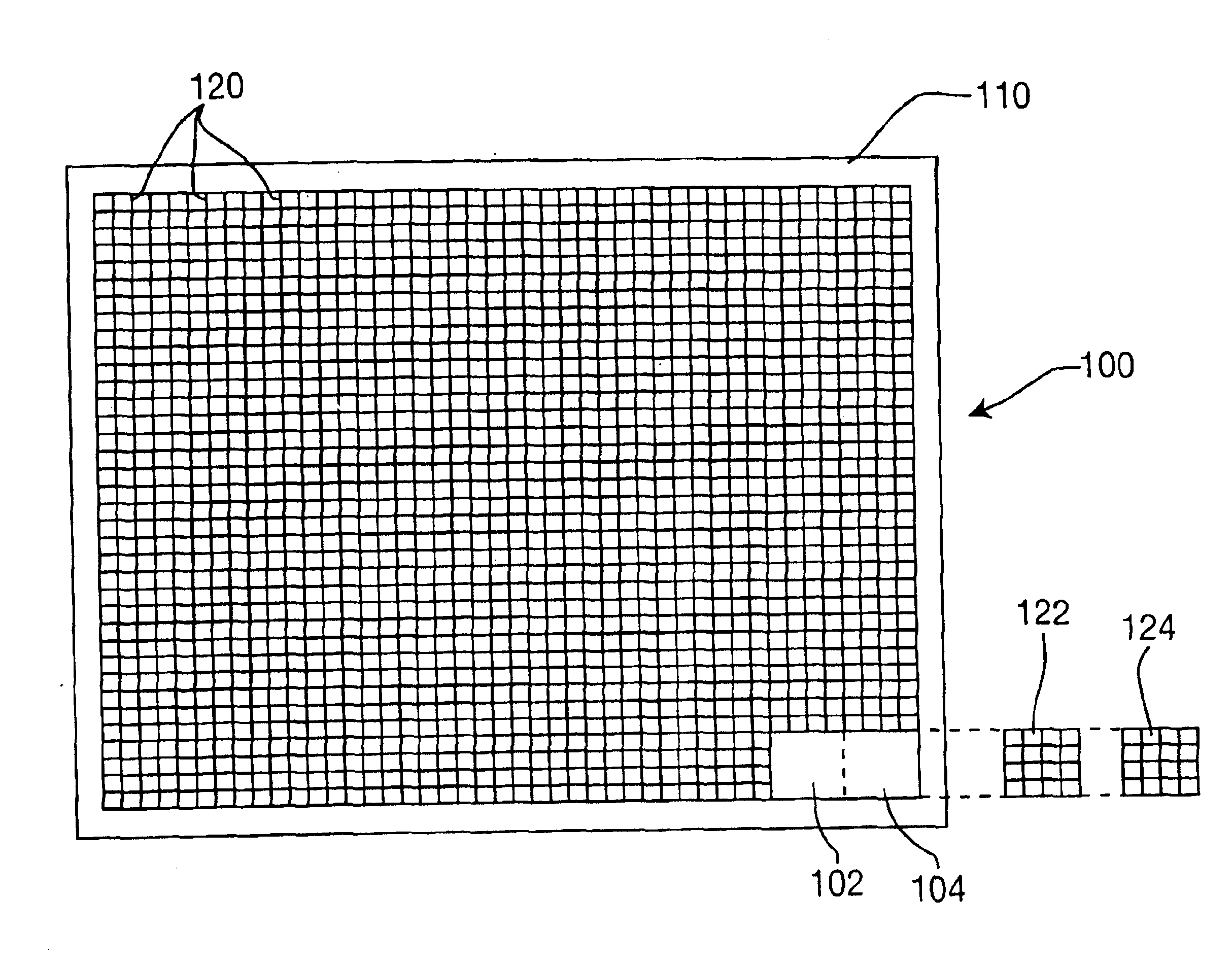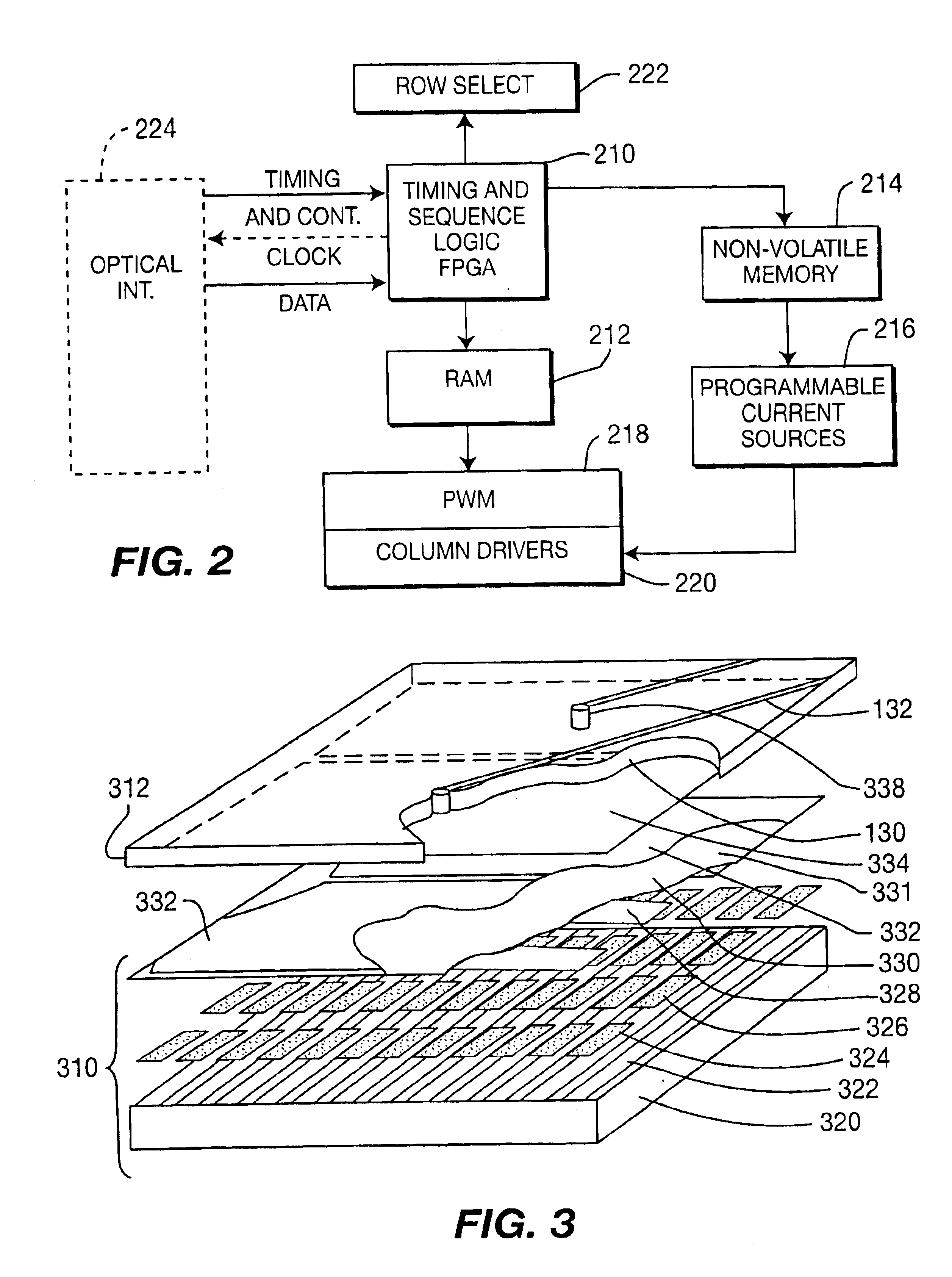Tiled electronic display structure
a technology of electronic display and tiling, which is applied in the direction of identification means, tubes with screens, instruments, etc., can solve the problems of limiting the size of display devices that can be manufactured, not being able to meet the need for large-area displays, and not having a clear solution
- Summary
- Abstract
- Description
- Claims
- Application Information
AI Technical Summary
Benefits of technology
Problems solved by technology
Method used
Image
Examples
Embodiment Construction
[0070]The invention is described in terms of exemplary embodiments which are illustrated in the drawing figures. The drawing figures are not to scale. Indeed, dimensions of the drawing figures are exaggerated to aid in the description of the invention. Although the invention is described in terms of an optical light emitting diode (OLED) display device, it is contemplated that it may be practiced with other emissive display technologies such as electroluminescent, light emitting diode (LED) or plasma technology; or with reflective display technologies such as Bistable, Reflective Cholesteric (BRC) liquid crystal technology.
[0071]FIG. 1 is a front plan view of a partially assembled large-area display 100 according to the present invention. The display 100 is a tiled display in which emissive or reflective elements, on which the image pixels are formed, are built as relatively small arrays on tiles 120 and assembled into a frame to produce the large-area display having a large number ...
PUM
| Property | Measurement | Unit |
|---|---|---|
| area | aaaaa | aaaaa |
| distance | aaaaa | aaaaa |
| electrical | aaaaa | aaaaa |
Abstract
Description
Claims
Application Information
 Login to View More
Login to View More - R&D
- Intellectual Property
- Life Sciences
- Materials
- Tech Scout
- Unparalleled Data Quality
- Higher Quality Content
- 60% Fewer Hallucinations
Browse by: Latest US Patents, China's latest patents, Technical Efficacy Thesaurus, Application Domain, Technology Topic, Popular Technical Reports.
© 2025 PatSnap. All rights reserved.Legal|Privacy policy|Modern Slavery Act Transparency Statement|Sitemap|About US| Contact US: help@patsnap.com



